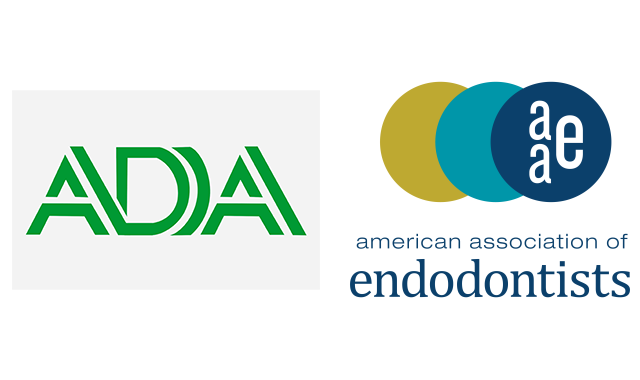ADA, AAE release new Coronavirus practice guidelines
In response to continuing concerns over the Coronavirus outbreak, the American Dental Association and the American Association of Endodontists have developed recommended guidelines of care for dental practices.

In response to continuing concerns over the Coronavirus outbreak, the American Dental Association and the American Association of Endodontists have developed recommended guidelines of care for dental practices.
The ADA’s new guidelines differentiate what should be considered a dental emergency vs. a non-emergency in the hopes of curbing the spread of the Coronavirus and alleviating the strain placed on hospital and emergency departments across the country.
Dental emergencies are, “potentially life-threatening and require immediate treatment to stop ongoing tissue bleeding [or to] alleviate severe pain or infection,” according to the ADA. These conditions include uncontrolled bleeding; cellulitis or a diffuse soft tissue bacterial infection with intraoral or extraoral swelling that compromises the patient’s airway; or trauma involving facial bones that potentially compromises the patient’s airway.
These guidelines may change as the Coronavirus pandemic progresses, the ADA added, and dentists should use their best judgment when determining a patient’s need for emergency care.
As part of these guidelines, the ADA added urgent dental care, which “focuses on the management of conditions that require immediate attention to relieve severe pain and/or risk of infection and to alleviate the burden on hospital and emergency departments.”
Urgent dental cases should be as minimally invasive as possible. Examples of urgent dental care treatments include:
- Severe dental pain from pulpal inflammation
- Pericoronitis or third-molar pain
- Surgical postoperative osteitis or dry socket dressing changes
- Abscess or localized bacterial infection resulting in localized pain and swelling
- Tooth fracture resulting in pain or causing soft tissue trauma
- Dental trauma with avulsion/luxation
- Dental treatment cementation if the temporary restoration is lost, broken, or causing gingival irritation
Other emergency dental care treatments include extensive caries or defective restorations causing pain; suture removal; denture adjustments on radiation/oncology patients; denture adjustments or repairs when function is impeded; replacing temporary filling on endo access openings in patients experiencing pain; and snipping or adjustments of an orthodontic wire or appliances piercing or ulcerating the oral mucosa.
- Non-emergency dental procedures, according to the ADA, include, but are not limited to:
- Initial or periodic oral examinations and recall visits, including routine radiographs
- Routine dental cleaning and other preventive therapies
- Orthodontic procedures other than those to address acute issues (i.e., pain, infection, trauma)
- Extraction of asymptomatic teeth
- Restorative dentistry including treatment of asymptomatic carious lesions
- Aesthetic dental procedures
The AAE echoed similar recommendations, urging dentists to postpone non-urgent oral health care for up to three weeks. These guidelines are expected to be updated as the virus progresses.
The AAE also lists examples of urgent conditions, including severe dental pain, abscess with lymphadenopathy, or a dental infection-related fever. Some urgent conditions may be treated with appropriate analgesics or antibiotics, and while providing pharmacological treatment, practitioners should continue to monitor patient responses via telephone.
Along with recommendations, the AAE has also published an article co-authored by Dr. Ken M. Hargreaves, which provides an overview of the epidemiology, symptoms, and routes of transmission of COVID-19, as well as considerations for appropriate dental care.
More information from both of these organizations is available online at ada.org/virus and aae.org/covid.
Oral Health Pavilion at HLTH 2024 Highlighted Links Between Dental and General Health
November 4th 2024At HLTH 2024, CareQuest, Colgate-Palmolive, Henry Schein, and PDS Health launched an Oral Health Pavilion to showcase how integrating oral and general health can improve patient outcomes and reduce costs.
Episode 31: Dentsply Sirona Implant Announcements
September 30th 2021DPR’s Editorial Director Noah Levine sat down with Gene Dorff, Dentsply Sirona’s group vice president of implants and Dr. Dan Butterman to review several big announcements the company made in the arena of implants during Dentsply Sirona World 2021 in Las Vegas.
Oral Health Pavilion at HLTH 2024 Highlighted Links Between Dental and General Health
November 4th 2024At HLTH 2024, CareQuest, Colgate-Palmolive, Henry Schein, and PDS Health launched an Oral Health Pavilion to showcase how integrating oral and general health can improve patient outcomes and reduce costs.
Episode 31: Dentsply Sirona Implant Announcements
September 30th 2021DPR’s Editorial Director Noah Levine sat down with Gene Dorff, Dentsply Sirona’s group vice president of implants and Dr. Dan Butterman to review several big announcements the company made in the arena of implants during Dentsply Sirona World 2021 in Las Vegas.
2 Commerce Drive
Cranbury, NJ 08512
All rights reserved.